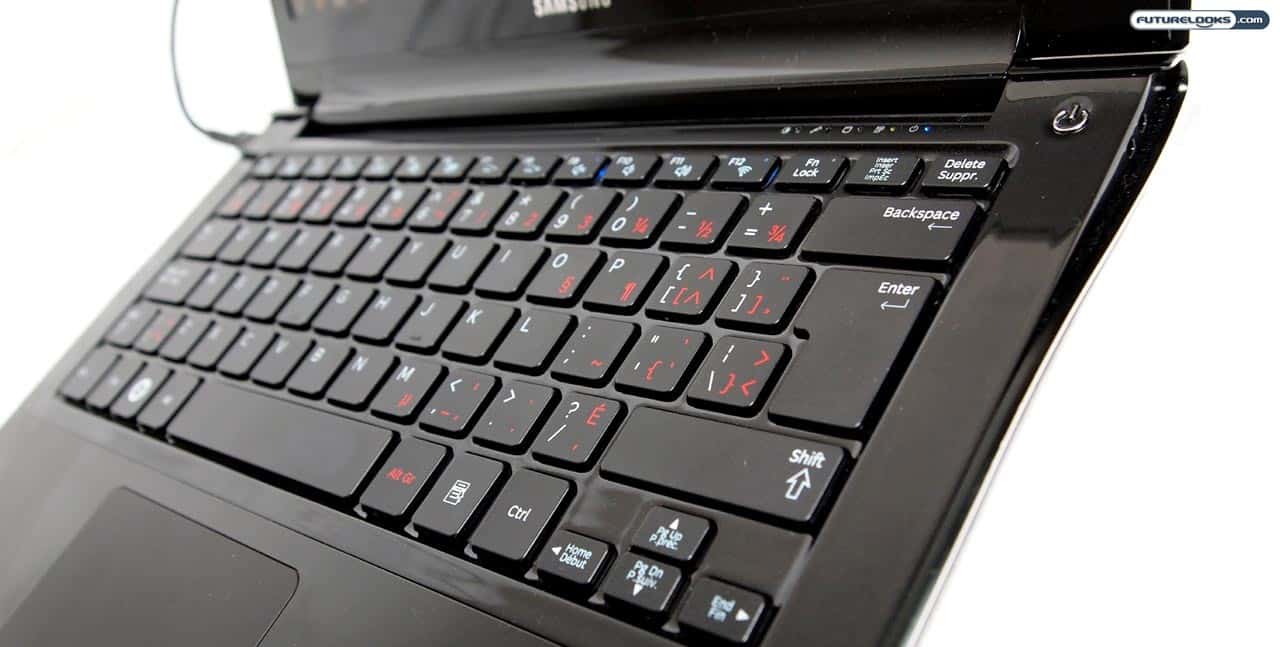Benchmark: PCMark05
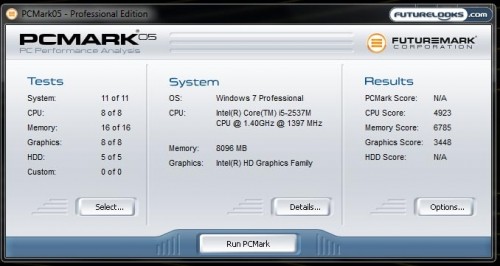
As per the norm, I also put the Samsung NP-900X3A-A02CA Series 9 notebook through the usual paces for benchmarks, starting with PCMark05 Professional Edition. As you can see in the screenshot above, it didn’t compute an overall PCMark score, but it does show a CPU score of 4923, memory score of 6785, and graphics score of 3448.
With the noted exception of memory (8GB certainly helps), the Series 9 was beat out in every other regard by the Samsung R780 I reviewed some time back. To be fair, the R780 was running a Core i5 M430 (2.27GHz) and NVIDIA GeForce GT 330M graphics. It’s also substantially larger and not slim or ultra portable.
Benchmark: 3DMark06
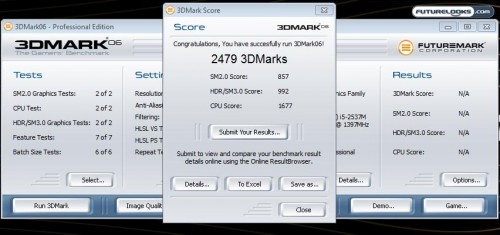
Not unlike PCMark05, the same kind of thing happened with 3DMark06 Professional Edition. The Series 9 was only able to get 2479 3DMarks, easily outperformed by the 6130 3DMarks that the R780 scored. The other figures — SM2.0 score (857), HDR/SM3.0 score (992), and CPU score (1677) — were similarly lower.
This should come as little surprise to most. When you go for thin and light, you usually have to make the sacrifice in performance relative to a machine that is much larger and heavier. Based on the overall ratings provided to me by Samsung, though, the Series 9 generally outperforms the MacBook Air, which is probably closer to an apples-to-apples comparison. It will be interesting to see how Apple’s new machines based on Sandy Bridge will fair.
Benchmark: CrystalDiskMark 3.0.1
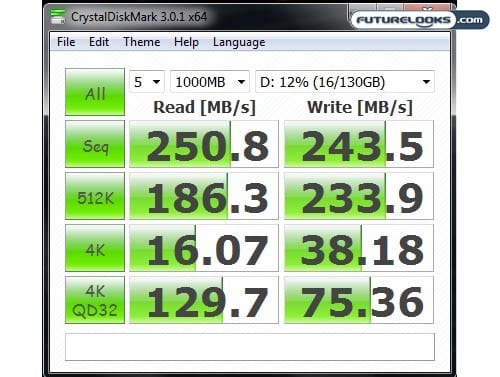
The 256GB solid state drive included in this SKU of the Series 9 is no slouch and it is broken into two partitions out of the box. It’s definitely responsible for much of the system’s overall responsiveness. Using the larger partition, I ran the benchmark through CrystalDiskMark 3.0.1 x64 and found some pretty impressive numbers. It was reading at up to 250.8MB/s and writing at 243.5MB/s in the sequential test which is quite impressive actually, but shows only mid-range performance in the 4K tests.
Benchmark: Street Fighter IV
Based on the numbers in PCMark05 and 3DMark06, the performance of this notebook in the Street Fighter IV benchmark should come as little surprise: it’s not a gaming rig.
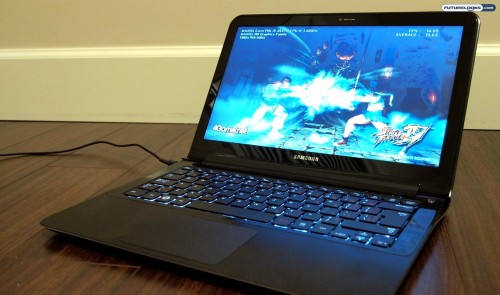
First, I stuck with all the default settings for the benchmark. This includes anti-aliasing off, full-screen at 1366×768, variable framerate, parallel rendering on, high model quality, high background quality, low self shadow, and medium particles. This got a score of E (6029) with an average of just 13.28 frames per second. So, the default settings render the game unplayable.
Dialing everything all the way down (no AA, full screen at 640×480, low model quality, low background quality, low particles, self shadow off, soft shadow off, and motion blur off), I was able to get that score up to B (13456) with an average 55.39 fps. That’s perfectly playable, but the game looks like crap at these settings. Even when I gave it a slight bump (low model quality, high background quality, 1024×768 full screen), I was thrown all the way back to a grade of E (8577) and an average of 29.37 fps.
It would be interesting to see if high performance memory could help it along like we found out in our review of the HyperX PnP DDR3 Notebook Memory for Sandy Bridge platforms. The fast 1866MHz memory clock might push a few of these scores over the hump.
Closing Thoughts
I wanted to like this machine. I really wanted to like this machine. Taking the Series 9 out of the retail box, I was immediately attracted to its svelte attractiveness. She is an absolute beauty with the brushed metal and super slim profile. On paper, the specs sounded really good too, including Core i5, 8GB of DDR3, and a 256GB SSD.
Then, I started using it. The keyboard itself is reasonably comfortable (left shift key aside), but the trackpad is too sensitive. The benchmark scores, with the noted exception of CrystalDiskMark, are anything but stellar. But then, you have to take a moment to pause and reflect on what the Series 9 is supposed to accomplish. It’s not supposed to be a high-end gaming rig. It’s not supposed to be a powerhouse. It’s supposed to be adequate but gorgeous.
And in that regard, I think it succeeds. It’ll easily outperform many of the cheaper and clunkier laptops out there, but it does come at a premium for that high-end finish and super slim profile. It’ll be interesting to see how the new Asus UX Series will compete against the Samsung Series 9 and MacBook Air. Apple isn’t the only pretty game in town and the Series 9 definitely joins that “blingariffic” club of notebooks that you lust to have, but it’s hard to make a good practical case for it. Especially with an MSRP of $2399 as tested.
It certainly receives our Ultra Bling Award because it truly is luxury and if money was no object, one might have to add it to the travel bag.
Pros
- Positively gorgeous design aesthetic
- Super fast SSD as standard equipment
- Multi-touch and gesture-enabled trackpad
- Non-glare LED backlit HD display
Cons
- Disappointing benchmark performance
- Higher end model is quite expensive
- Trackpad is too sensitive to taps
- Annoying too-small left shift key
Overall Rating: 8.0 / 10.0

Help Us Improve Our Review By Leaving a Comment Below!

